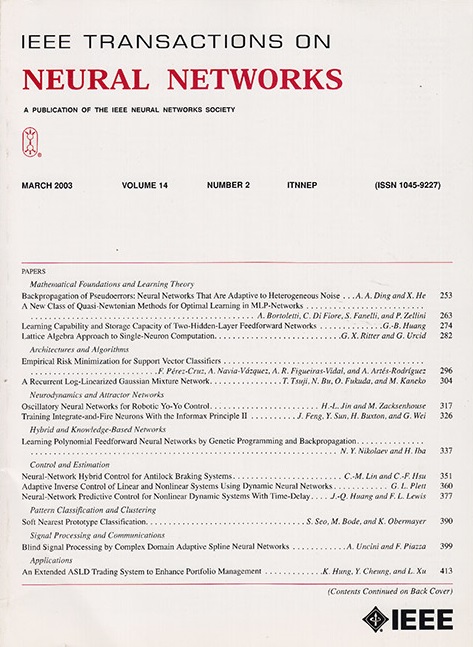Bi-PIL: Bidirectional Gradient-Free Learning Scheme for Multilayer Neural Networks.
IF 10.2
1区 计算机科学
Q1 COMPUTER SCIENCE, ARTIFICIAL INTELLIGENCE
IEEE transactions on neural networks and learning systems
Pub Date : 2025-05-15
DOI:10.1109/tnnls.2025.3564654
引用次数: 0
Abstract
Training deep neural networks typically relies on gradient descent learning schemes, which is usually time-consuming, and the design of complex network architectures is often intractable. In this article, we explore the building of multilayer neural networks based on an efficient gradient-free learning scheme offering a potential solution to the architectural design. The proposed learning scheme encompasses both forward and backward training (BT) processes. In the forward process, the pseudoinverse learning (PIL) algorithm is employed to train a multilayer neural network, in which the network is dynamically constructed leveraging a layer-by-layer greedy strategy, enabling the automatic determination of the architecture across different hierarchies in a data-driven manner. The network architecture and connection weights determined in the forward training (FT) process are shared with the backward process which also conducts gradient-free learning to update the connection weights. After the bidirectional learning, a neural network comprising two twin subnetworks is obtained, and the fused features of subnetworks are used as inputs for downstream tasks. Comprehensive experiments and detailed analyses demonstrate the effectiveness and superiority of the proposed learning scheme.Bi-PIL:多层神经网络双向无梯度学习方案。
训练深度神经网络通常依赖于梯度下降学习方案,这通常是耗时的,复杂网络架构的设计往往是棘手的。在本文中,我们探索了基于有效的无梯度学习方案的多层神经网络的构建,为建筑设计提供了一个潜在的解决方案。提出的学习方案包括前向和后向训练(BT)过程。在正向过程中,采用伪逆学习(PIL)算法训练多层神经网络,利用逐层贪婪策略动态构建网络,以数据驱动的方式自动确定不同层次的结构。前向训练过程中确定的网络结构和连接权值与后向训练过程共享,后向训练过程也进行无梯度学习来更新连接权值。经过双向学习,得到由两个孪生子网络组成的神经网络,并将子网络的融合特征作为下游任务的输入。全面的实验和详细的分析证明了所提出的学习方案的有效性和优越性。
本文章由计算机程序翻译,如有差异,请以英文原文为准。
求助全文
约1分钟内获得全文
求助全文
来源期刊

IEEE transactions on neural networks and learning systems
COMPUTER SCIENCE, ARTIFICIAL INTELLIGENCE-COMPUTER SCIENCE, HARDWARE & ARCHITECTURE
CiteScore
23.80
自引率
9.60%
发文量
2102
审稿时长
3-8 weeks
期刊介绍:
The focus of IEEE Transactions on Neural Networks and Learning Systems is to present scholarly articles discussing the theory, design, and applications of neural networks as well as other learning systems. The journal primarily highlights technical and scientific research in this domain.
 求助内容:
求助内容: 应助结果提醒方式:
应助结果提醒方式:


